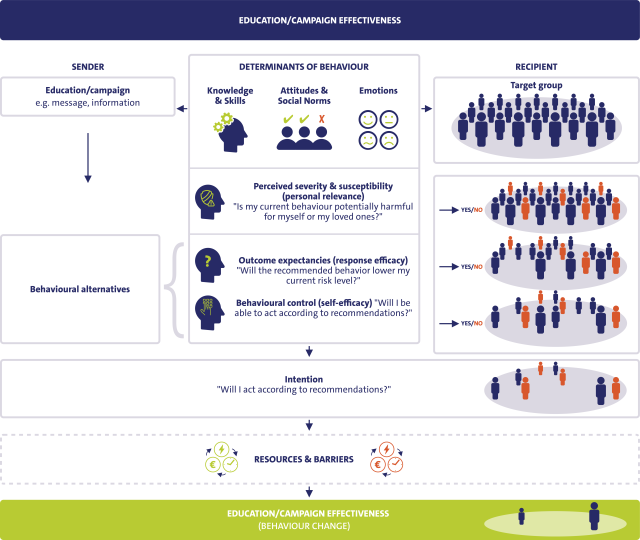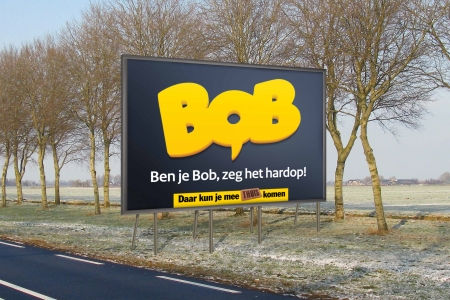It is important for an information campaign to offer behavioural alternatives: very concrete messages about what people can do to avert the negative outcome. By offering resources and removing barriers, people are more likely to actually engage in the intended behaviour. See also Figure 2, which shows the relationship between theories and steps in public communication.
If people feel that their current behaviour is risky for themselves (personal vulnerability) and that they can actually change something about this risk (outcome expectancies and behavioural control), they are most likely to change their behaviour (or at least have the intention to do so) [26] [30]. See also the question What public communication strategies are there? Therefore, it is important for a publicity campaign to offer behavioural alternatives: very concrete messages about what people can do to avert the negative outcome. There is even evidence that in the absence of behavioural alternatives, a campaign can be counter-effective. Particularly in the case of fear-based public communication, people are more likely to seek other ways to reduce the threat, such as ignoring or actively denying the content of the campaign [31] [32] [33] [42].
But even if people intend to change their behaviour, they will not always do so. Research shows that an average to high intention to change behaviour, at best, leads to a small to average actual behavioural change [6]. This is called the Intention-Behaviour Gap [7]; the difference between intention and behaviour. This is partly due to people not having the right resources, or to barriers that prevent people from doing what they intend.
The likelihood of a campaign being effective increases if it provides resources or manages to remove barriers. Examples of deploying resources include handing out garden waste baskets if you want residents to separate more biowaste, or handing out a bicycle helmet at school [63] to encourage bicycle helmet use. The Goochem (Savvy) campaign to encourage seat belt use in the back seat [64], used a situational cue, a stuffed animal that children could attach to the seat belt. This was intended to reduce the likelihood of 'forgetting' and thus break the barrier of habitual behaviour.
Incidentally, the gap between intention and behaviour also shows the importance of evaluating campaigns on observed behaviour (see [65] for evaluation methods). Merely measuring whether people say they will change their behaviour says too little about the actual effectiveness of a campaign.

Figure 2. Elements important for the effect of public communication.
